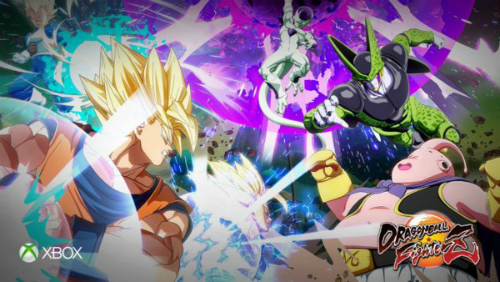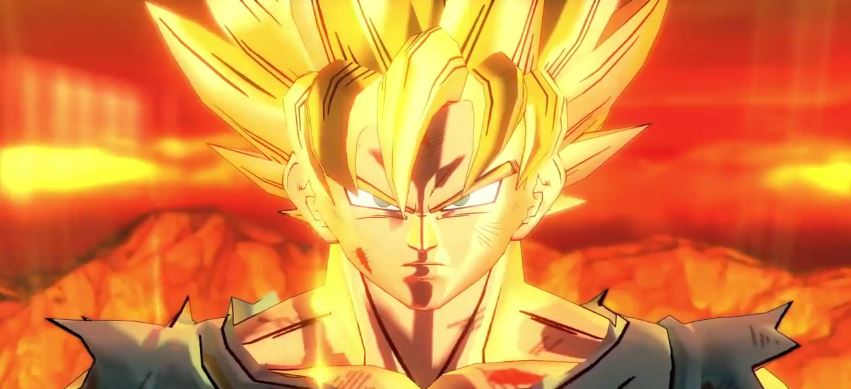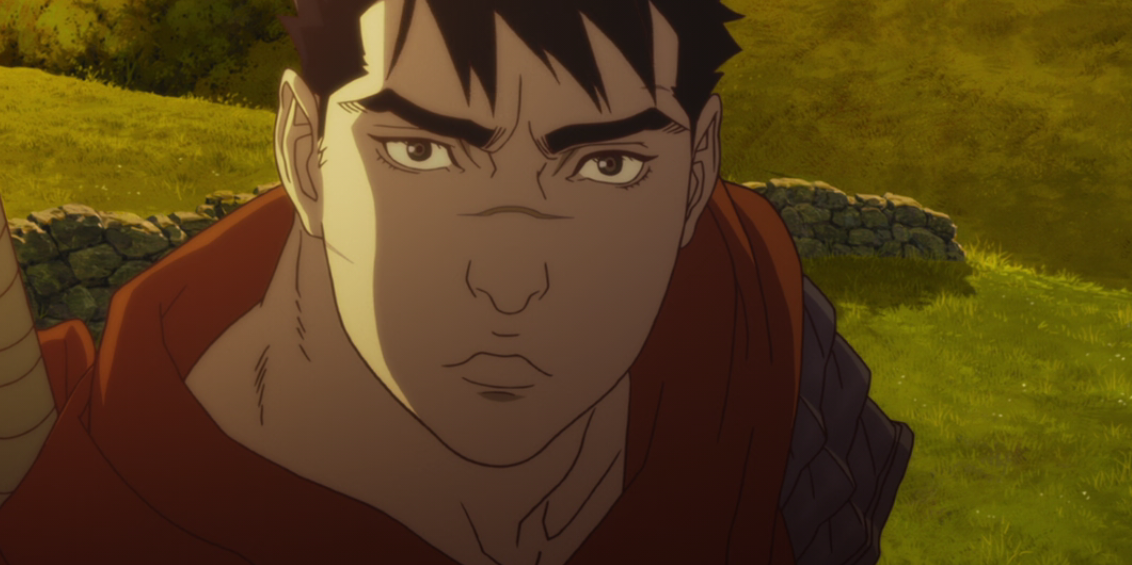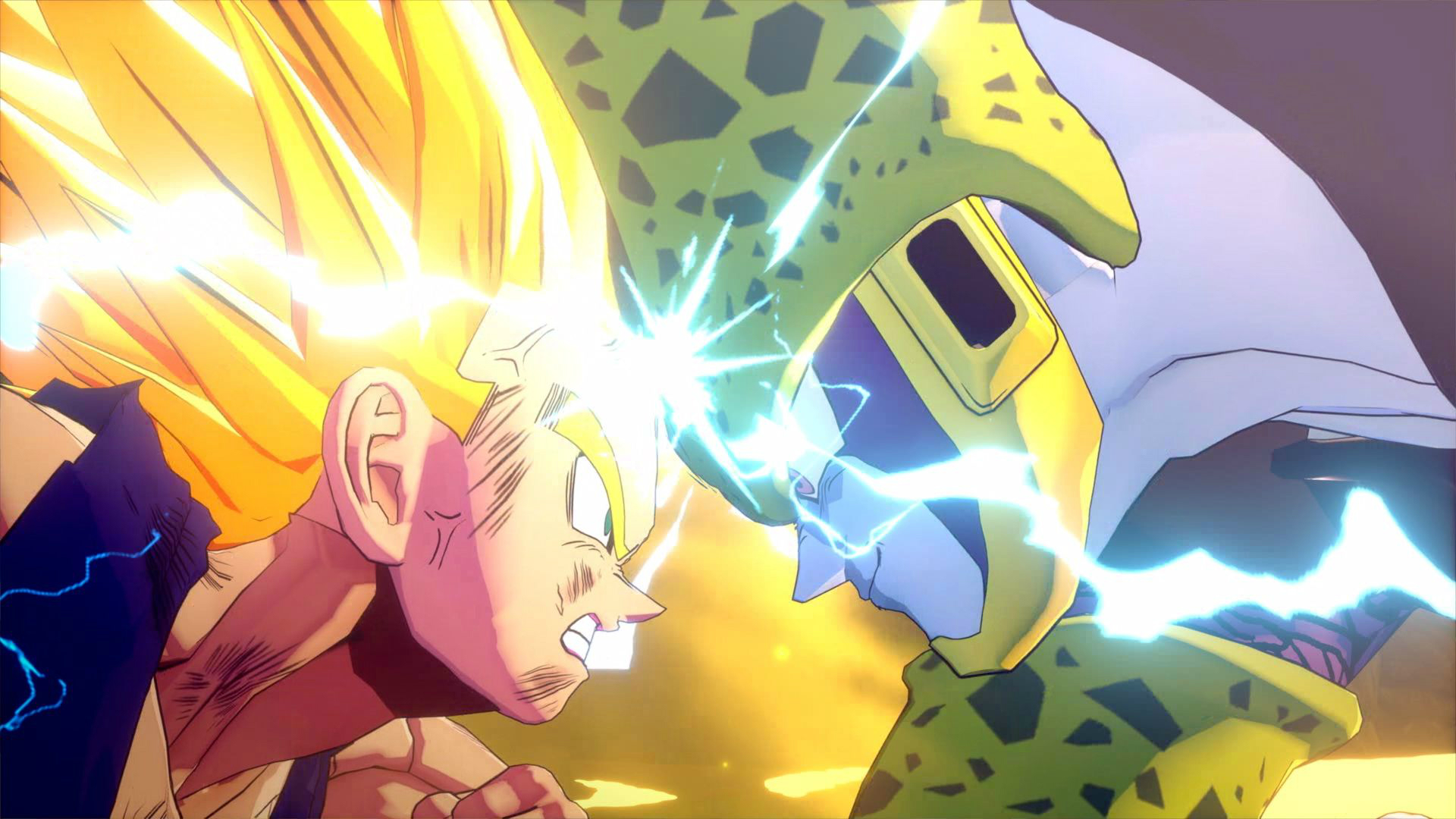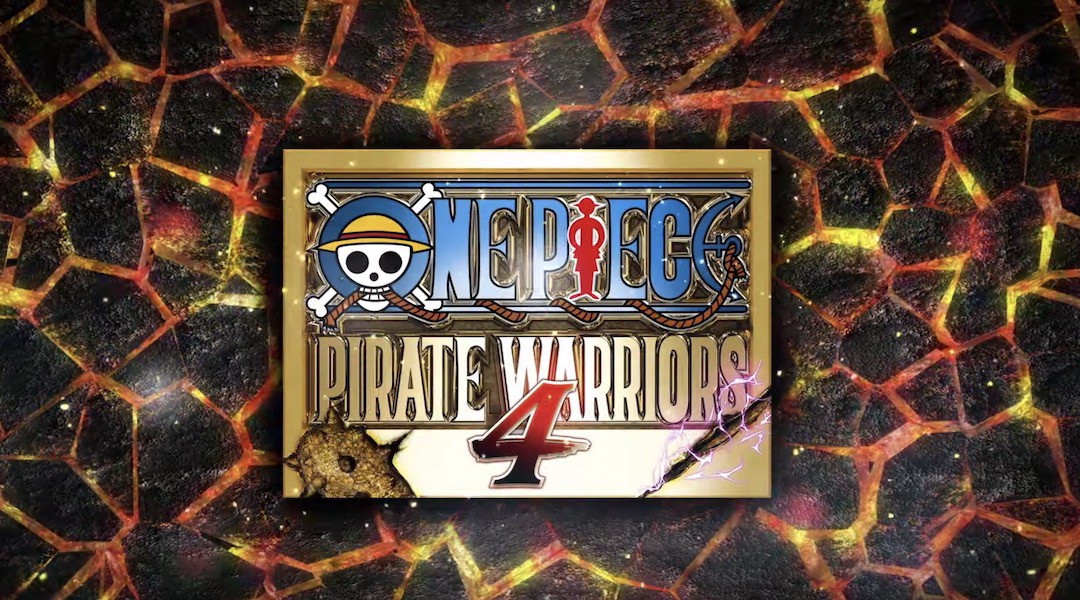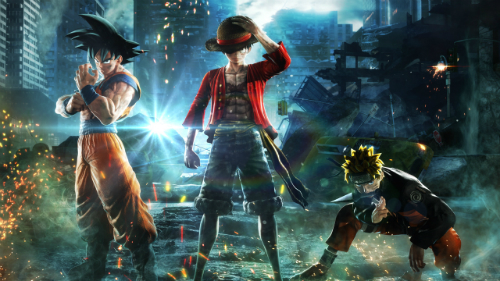
Celebrating 50 years in any industry is quite an achievement and it just so happens Japan’s Weekly Shōnen Jump manga magazine has hit that milestone. To celebrate, the magazine has teamed up with Bandai Namco to bring fans Jump Force, a crossover game featuring many of their beloved manga characters. Despite promising lots of glitz and glamour the game falls short due to quality of life issues and being an, at times, average fighter.
Jump Force opens with Dragon Ball’s Frieza attacking Times Square in New York. An assortment of Jump heroes engage the fiend in battle, during which the player’s off screen avatar is attacked and almost killed by Frieza. Trunks revives the avatar using a special umbras cube which also turns them into a superhero. It’s here you customise your avatar’s fighting style (ninja, pirate or martial arts), their gender and visual appearance. You learn that the manga universes of Jump have been collectively merged with the real world by a mysterious force who is also using the power of dark umbras cubes to control the heroes. Players join the titular Jump Force, a group of heroes who set out to put a stop to the ensuing threat. Like most multi-franchise mash-ups the story is predictable and uninspiring, serving merely as a weak plot device to bring all the characters together in one game. There’s little character development and the game assumes you’re already familiar with the franchises; if you’re unfamiliar with most of the manga or anime adaptations then there’s not going to be a lot of appeal for you.
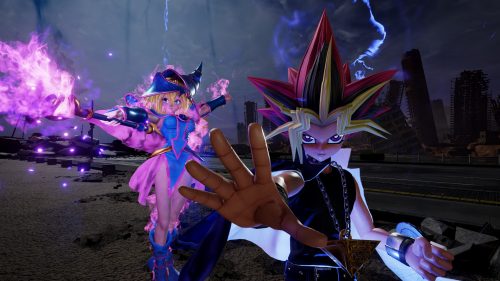
A large chunk of the single-player campaign sees you battling new characters to free them from the influence of the dark umbras cubes and recruit them into the Jump Force team. This isn’t quite as exciting as it may seem as most fighters are encountered the same way; you’ll receive a mission brief stating a new fighter has been located, you’re transported to their location and are introduced to the fighter, you fight, extract the dark umbras cube from them and return to Jump Force HQ for a debrief. Rinse and repeat. It’s incredibly repetitive and there are also long loading screens between each sequence. I have a work colleague whose son quickly lost interest in the title and went back to other games. This is a kid who’s an avid Dragon Ball fan and was super hyped for this game; which says a lot about how much of a grind the story can actually be.
The Jump Force Headquarters acts as the main hub world. Like Dragon Ball Xenoverse before it, you can go online and see other players navigating the world. There are kiosks where you select missions, purchase new outfits and customise the look of your avatar. There are also options to play free battles against CPU opponents or other human players in local and online multiplayer matches. The hub world feels mostly uninspiring, primarily due to the large empty open spaces and the amount of time it takes to travel between areas. Sometimes you must talk to a specific character to advance to the next mission, but there’s not a clear indicator on screen to show where they are located unless you pull up the map or are close by. It’s sloppy implementation. The game would have actually benefited from a smaller hub world or have it entirely replaced with just menus.
The actual fighting gameplay is where Jump Force shines and if you’ve played other Bandai Namco fighters then you should be right at home. Players must string together weak and strong attacks to unleash combo moves. A chase/dodge button allows you to quickly close in on an opponent or avoid incoming attacks, and there are also block and throw maneuvers. One of the more interesting aspects in Jump Force is that each character has four special attacks, dubbed J-Skills, that can unleash devastating damage onto an opponent. J-Skills reflect the character’s own franchise; so for example Goku can unleash a Kamehameha Wave, Naruto can use his trusty Rasengan and Yugi Moto can call upon various duel monsters. When critically damaged most characters can also transform into an Awakened state (Super Saiyan, Sage mode, etc) for increased damage output. The controls are easy to learn making the game accessible to almost everyone, but it’s also challenging to master.
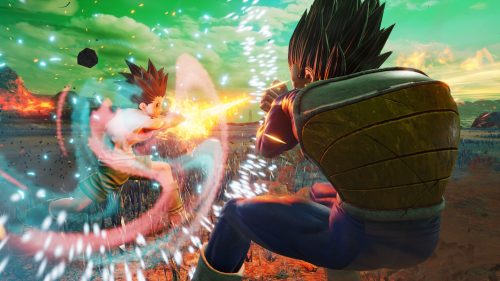
There are some light RPG elements at play here as well, with characters having their own attack and defense stats and can gain experience points to be leveled up individually and grow stronger. Unfortunately it does feel more like an afterthought than a compelling gameplay mechanic. A saving grace is being able to pick and choose which J-Skills are equipped to your customer avatar player – though you will only have access to J-Skills which are associated with characters you have recruited to the Jump Force team.
You fight battles with a three-man squad, having the option to call in support from teammates or switch between characters completely on the fly. This allows you to create dream team ups – perhaps you want the orange fighters Naruto and Goku to finally battle side-by-side, or maybe you want Boruto to fight alongside Ichigo Kurosaki and Cell. It’s completely up to you. Each character does have their own play style, so finding a balanced team to counter weaknesses is a good tactic. Also, be warned that all three fighters share a single health meter, meaning battles tend to end quickly.
At the time of writing this review there are 40 playable characters with a further nine to join the roster as DLC. It’s clear Jump Force favours some franchises over others, particularly Dragon Ball, Naruto and One Piece due to their popularity. To name a few more, Bleach, Rurouni Kenshin, Yu-Gi-Oh!, Yu Yu Hakusho, JoJo’s Bizarre Adventure and Hunter x Hunter are also represented. Some fans will be disappointed by the character choices; Naruto’s Kaguya for example is an odd choice given she only appears towards the end of the manga and series staples Sakura and Orochimaru have been left out of the game entirely. Death Note characters Light and Ryuk do make a non-playable appearance, and some franchises like Assassination Classroom have no representation at all.
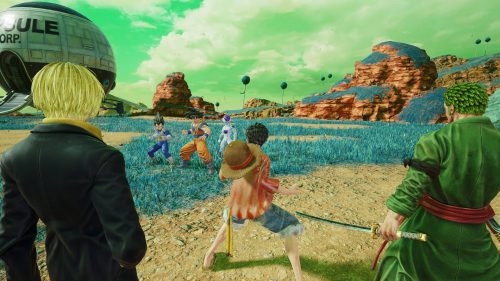
Jump Force is dubbed in Japanese only, which some gamers will prefer while others will loathe depending how you’ve watched the anime adaptions of the franchises. There are English subtitles but strangely cutscenes do not offer the ability to skip dialog. I’m not the fastest reader, but when the characters talk slowly and you are waiting several seconds for the next line to appear it can become annoying.
Having the manga characters appear in the real world means developer Spike Chunsoft has had the opportunity to play around with the visual style of the game. Characters still have a predominantly cartoon cel-shaded vibe, but they’re also closer to more real life interpretation as well. Battles are fast and absolutely gorgeous – there are plenty of lighting, fire and smoke effects that make the battlefield feel completely chaotic. As battles progress character clothing also shows signs of battle damage via rips and dirt, which helps showcase the intensity of the fight. Cutscenes are not quite as appealing, with characters standing stiffly while conversing with each other. For all the flare and glory of the fights, the story isn’t given the same visual treatment.
While Jump Force isn’t necessarily a bad game it does suffer from quality issues that dampen the overall experience. The story is lacklustre, the hub world is too big for what is essentially a mission select area, there are long loading times and the RPG elements are underdeveloped. Treat this title as just a normal fighting game and there are some redeeming qualities thanks to its fast paced action and visual flare. Unfortunately, this is not an ideal way to celebrate Weekly Shōnen Jump’s 50th anniversary.
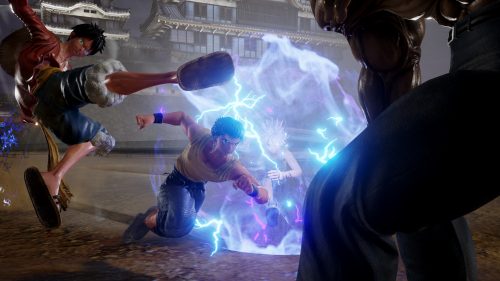
Rocket Chainsaw reviewed Jump Force on PS4. It is also available on Xbox One and PC via Steam.
- Visuals during fights are gorgeous - Combat is accessible but challenging to master
- Lackluster story - Long loading screens - Lack of English dub option - Dull hub world

